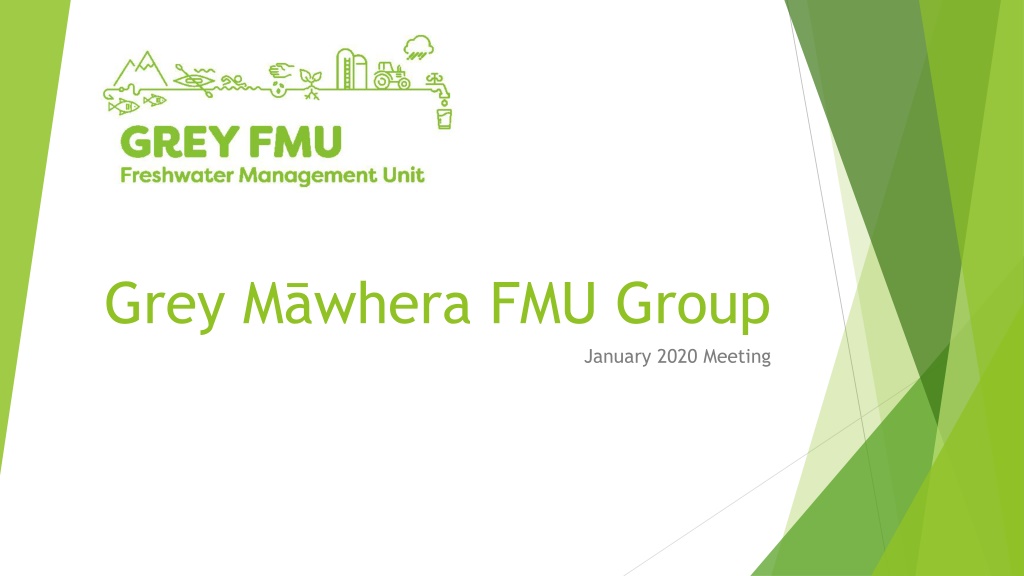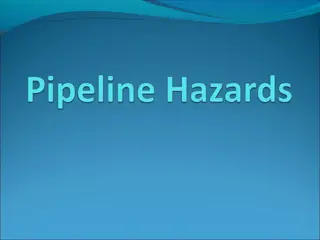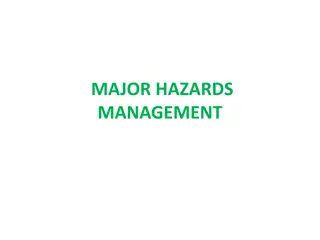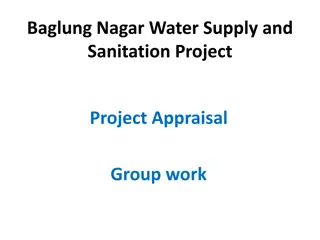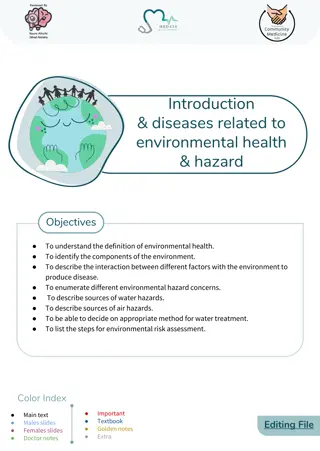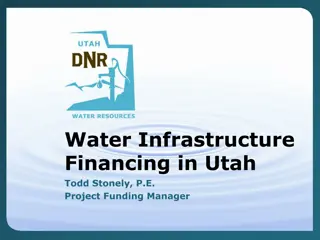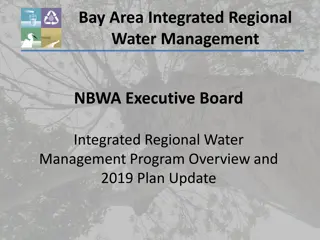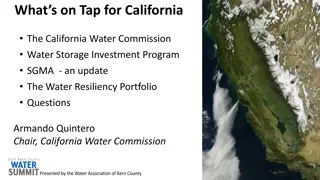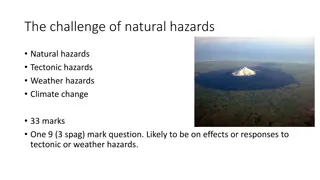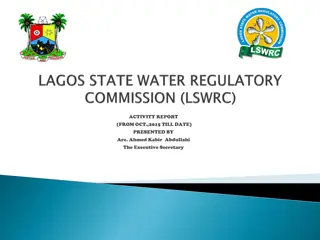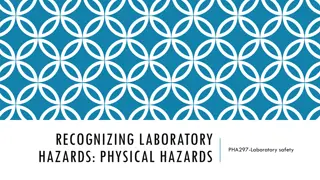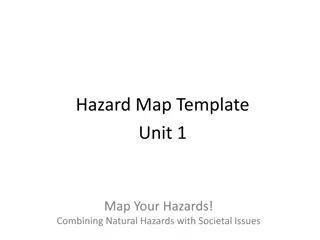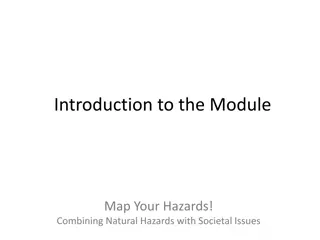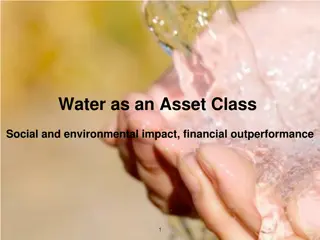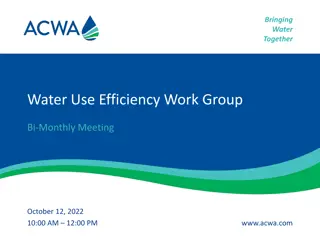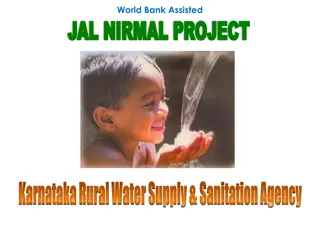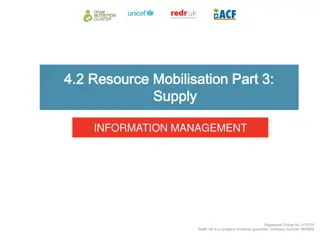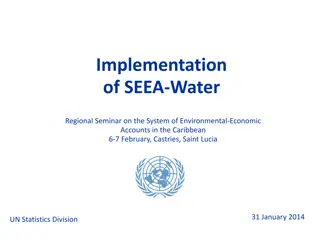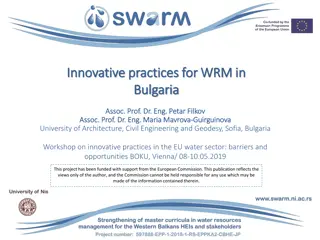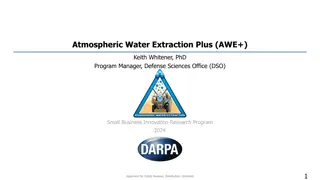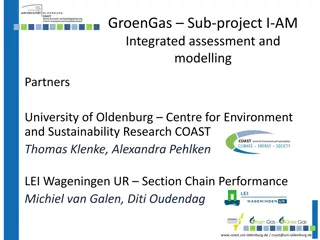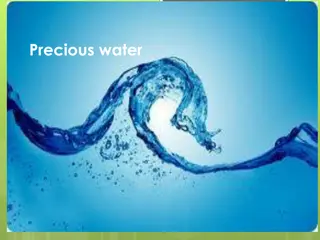Water Supply Hazards and Management Insights
Understanding catchment hazards for water supplies is crucial for effective management. This report discusses E. coli values, turbidity concerns, fauna impact, and algal blooms. It also suggests measures to address these issues, such as riparian planting, stock management, and sediment control in agriculture. The focus is on maintaining water quality for various activities while preserving natural ecosystems.
Download Presentation

Please find below an Image/Link to download the presentation.
The content on the website is provided AS IS for your information and personal use only. It may not be sold, licensed, or shared on other websites without obtaining consent from the author. Download presentation by click this link. If you encounter any issues during the download, it is possible that the publisher has removed the file from their server.
E N D
Presentation Transcript
Grey Mwhera FMU Group January 2020 Meeting
Attribute: E.coli Values: Agriculture, boating, general water sports, swimming, drinking, fishing, food gathering, whitebaiting, cultural use and value Current National Bottom Line all rivers bigger than 4thorder: median under 130 < 34% under 260 < 20% under 540 < 20% under 540 < 5% under 1200 Proposed National Bottom Line swimming sites only: < 5% under 540
Attribute: E.coli Ways to address incorporate some of the measures in the proposed NPSFM. Measures include: Ensuring stock are fenced out of waterways Encouraging riparian planting and use of farm plans Support for more public toilets, domestic septic tank servicing and upgrades, septic tanks checking, progress with municipal connections Rules to control activities such as intensive winter grazing, hill country cropping, and feedlots
Attribute: Turbidity (sediment) Values: Agriculture, drinking, boating, swimming and general watersports, fishing, food gathering, whitebaiting, natural character, cultural use and value, and ecosystem services Some sites are failing or trending down Ways to address measures in the proposed NPSFM largely the same measures as for E. coli (except loo s ) Encouraging best practice in mining, farming, urban dev, and forestry sediment management
Attribute: Fauna Values: Fishing, cultural use and value, future use and ecosystem services. National Bottom Line a macroinvertebrate index of at least 80. This is pretty low. Few sites are failing, but some are. Ways to address incorporate some of the measures in the proposed updated NPSFM On the Coast, habitat is important e.g. sedimentation, channel alteration, shade in smaller streams, and warm places Maintain flows
Attribute: Algal blooms and Cyanobacteria Rivers and Lakes Values: Agriculture, boating, general watersports, swimming, drinking, fishing, food gathering, natural character, cultural use and value, ecosystem services Cyanobacteria traditionally not a problem. But blooms can occur in stable, summer weather Ways to address: Encourage riparian planting Reduce nutrient loss Maintain flows (this will largely work for temperature and oxygen too)
Attribute: Nutrient (toxicity) Values: Ecosystem services etc A rare issue on Coast A number of sites trending down, but in A or B state. Attribute: Nutrient (algal blooms) Values: Ecosystem services etc Blooms can occur in stable, summer weather A number of sites trending down, but in A or B state. Interventions as mentioned previously for algae
